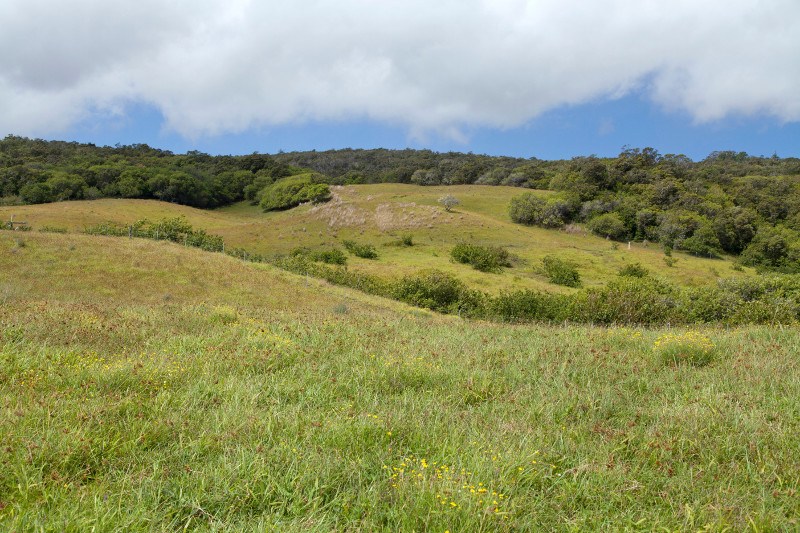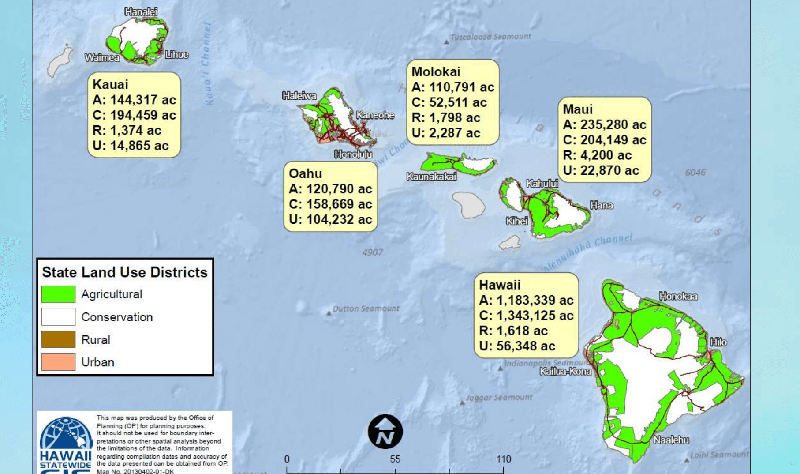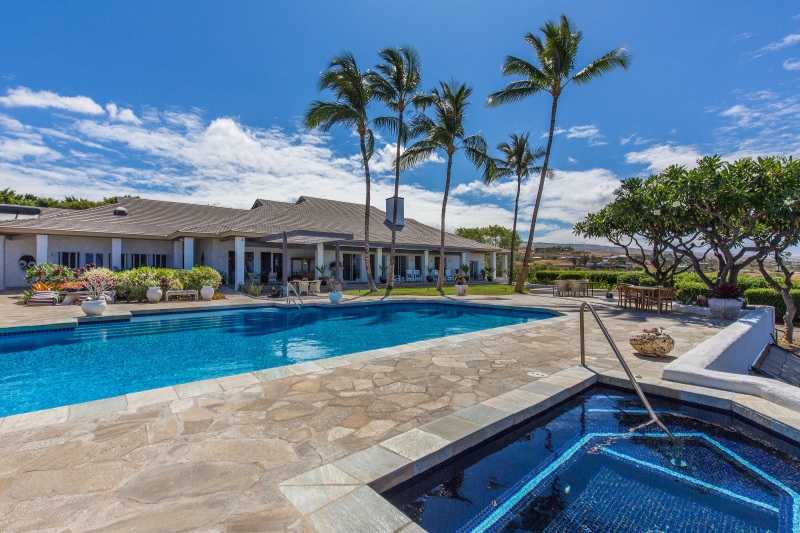You are told the property you are buying is “ag” or “conservation” and wonder what that means for your planned use. Your first question should be: is that according to the County zoning code, the Hawaii State Land Use Commission designation, or both?
I have mentioned this distinction in recent posts about the new Hawaii County Short Term Vacation Rental ordinance and years ago with respect to what you need to know about buying oceanfront property in Hawaii.
Since I keep hearing misinformation in discussions of vacation rental regulation as well as more generally with listings of larger acreages and oceanfront parcels, perhaps it is worth going back to basics.

This 26+ acre ag-zoned property has exclusive shoreline access, but does not include the oceanfront. A small portion is in coastal conservation district. (MLS 618452)
What is Hawaii State Land Use Designation?
The Hawaii State Land Use Commission was established in 1976, and empowered to designate all 4,112,388 acres of land in the state into four defined categories (for more detail see the statute):
- Urban District – lands in urban use at that time and with provision for foreseeable urban growth
- Rural District – areas with small farms and low-density residential lots, at least 1/2 acre
- Agricultural District – areas without much development, with greatest possible protection given to lands with capacity for intensive cultivation
- Conservation District – forest and water reserve zones, in addition to coastal zones

Can you tell where the boundary is between agricultural and conservation (forest) districts on this 485-acre parcel (MLS 263044)? Hint: it is not where it looks like it should be!
The State began a 5-year review of their district boundaries ending in 2013, resulting in only minor changes. The total area by designation is as follows:
- 49% of land in Hawaiʻi is designated conservation
- 45.8% of land in Hawaiʻi is designated agricultural
- 4.9% is designated urban
- 0.3% is designated rural
If you want to check on the designation or designations of a parcel you own or are interested in, here is an interactive map.
From the standpoint of our Hawaii Life conservation and legacy lands practice, the fact that almost 95% of the state is designated as conservation or agricultural land is a “necessary but not sufficient” condition. The designations in and of themselves do not “protect” the land from subdivision or development.

The Role of the Counties: Zoning and Special Use Permits
The role of the counties is to establish more detailed zoning codes and permitted uses, and the county planning commissions evaluate special permit requests against the background of both their zoning and the State guidelines for the four districts. On a parcel of under 15 acres, the County planning commissions can make the decision on special uses like a retreat center with overnight accommodations, but on larger parcels, the State Land Use Commission has the ultimate authority.
The irony is that the state designations and county zoning codes do not necessarily fit the actual uses that have evolved. Hence the current consternation over the new Hawaii County short term vacation rental bill that would immediately make short term rentals in places like Kohala Ranch or subdivisions in Puna district illegal, despite the fact that these newer subdivisions really do not allow or encourage much in the way of genuine agriculture (for example, the cattle no longer range free at Kohala Ranch).

This 6-bedroom Kohala Ranch home was built as a corporate retreat – not a rental (MLS 622996)
Coastal Zones: Federal, State and County Regulation
If you are looking at beachfront, oceanfront, or almost-oceanfront property, you might have yet another permitting process governing your ability to build, develop or subdivide your property. The United States government passed the “CZM Act” in 1976 to protect coastal zone resources, and Hawaiiʻs program was approved in 1978 to conform to federal rules. It is state policy “to preserve, protect, and where possible to restore the natural resources of the coastal zone of Hawaiʻi.”
It is actually the counties that implement the state program under the federal CZM act. In other words, if you have oceanfront property, you might well need a “special management area” permit in addition to all other permits when you build.
The bottom line is that land use in Hawaiʻi is complex. Your real estate agent should be able to help you identify which designation, zoning and other regulations apply to a property, and from there you might need to seek the assistance of a real estate attorney and/or planning consultant.
If conservation and agricultural easements to protect those land values would be of interest, I can help connect you with appropriate resources as well.

Lester William Medeiros
August 18, 2019
When a parcel is designated as Ag/Preserve, what does this mean? Does it mean that part of the land can have a single family dwelling with a wet bar (Ag) with agriculture use and part of it to be preservation? What is my responsibility with the preservation designation? Do I just let it be as it is or do I have to be pro-active in some way?
Thank you, Lester